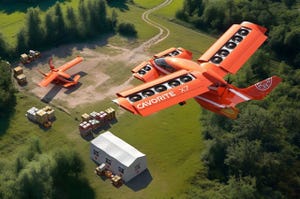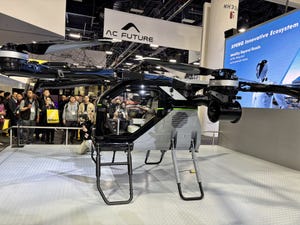Self-Driving Mobility Pods Tested at Canadian Airport
A&K Robotics’ self-driving one-seat pods feature real-time mapping software, allowing users to track their location at all times

An innovative new method of transportation for those who need mobility assistance will be tested at Canada’s Vancouver International Airport (YVR).
Autonomous Cruz Mobility Pods, manufactured by local company A&K Robotics, will be assessed in a pilot program that could pave the way for a radical overhaul of how people get around busy airport terminals.
The self-driving one-seat pods employ integrated real-time mapping software, which is displayed on a tablet in front of the user that enables them to see where they are at all times.
Cameras, sonar and lidar, meanwhile, are used to ensure that the pods do not come into contact with any of the multitude of obstacles that are common in a terminal.
And if anyone comes too close, the pods simply come to a halt and wait until the path is clear.
Shops, washrooms, restaurants and other amenities can be accessed, and the pods are practical, too, with room to store luggage underneath the seat.
Significantly, no external infrastructure is required for their safe operation.
Currently, passengers with restricted mobility have to rely on wheelchairs and electric carts supplied by airlines to help negotiate their way around the airport.
The pilot is part of a joint initiative between several stakeholders, including British Columbia’s Integrated Marketplace, a project designed to encourage innovation in the province, Innovate BC, Vancouver Airport and A&K Robotics.
British Columbia and the Government of Canada have contributed up to $1.6 million to make the pilot happen, with a phased approach being utilized to introduce the pods.
Initially, a small number will be put into operation and feedback and insights gathered, with the intention that as many as 10 could eventually be in use by 2025.
Brenda Bailey, British Columbia’s Minister of Jobs, Economic Development and Innovation, said: “Through the Integrated Marketplace, we’re helping A&K Robotics to continue developing the tools they need to continue to grow while supporting people living with mobility challenges to access the traveling services they need.”
Mathew Anderson, CEO of A&K, added: “By introducing our micromobility robot pods at YVR, we are setting a new standard of accessibility for every traveler while driving economic growth and opening the door for innovation in global transportation and aviation.”
A&K already has experience in how the pods can work in this environment, having taken part in a trial at Hartsfield-Jackson Atlanta International Airport – the world’s busiest airport – in 2023.
About the Author
You May Also Like








